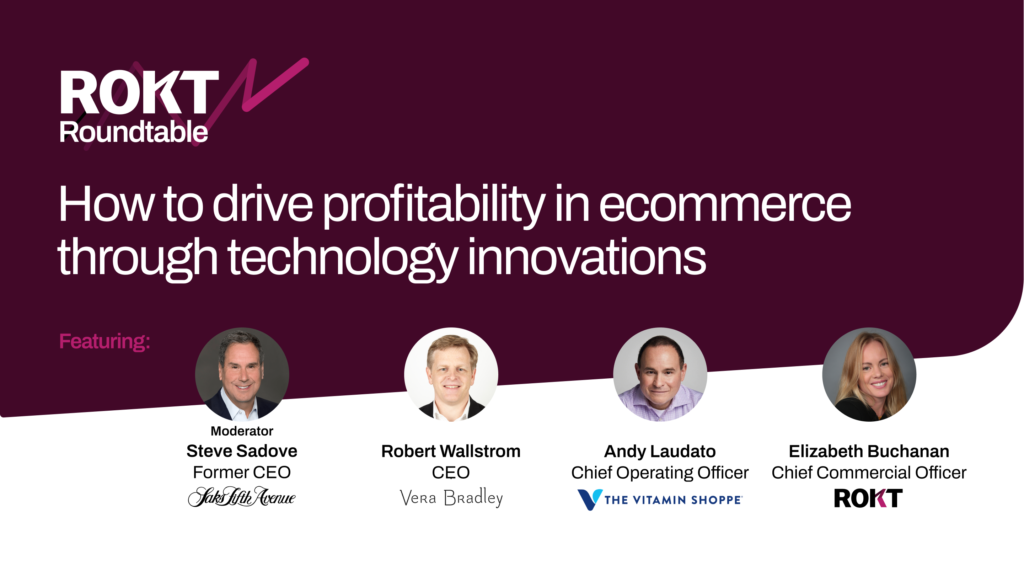The online retail landscape: how to increase profitability in ecommerce while remaining agile

“We’ve trained a whole world of consumers now to understand that when they type in their email address, they get a 10% discount and that they realize that there’s a value exchange happening for their data,” says Elizabeth Buchanan, Chief Commercial Officer at Rokt in a recent conversation with Steve Sadove, former CEO of Saks, Andy Laudato, COO of Vitamin Shoppe, and Rob Wallstrom, CEO of Vera Bradley. They discussed trends impacting retailers including online retail, supply chain, inflation, first-party data, and much more.
The explosive growth that ecommerce experienced over the course of the pandemic has slowed, and even though digitization has sped up by a number of years, consumers are beginning to return to stores. How do retail brands navigate this complicated and dynamic landscape while providing their shoppers with the customer experiences that they expect, and increasing their profitability?
Here are the key takeaways from the conversation:
- Industry trends: As consumers start going back in stores and the margins for ecommerce are tightening, what should brands be doing to remain competitive? With the cost of customer acquisition skyrocketing, retailers need to find solutions that allow them to increase retention and lifetime value, while also providing added profitability. Retail media networks are where some companies are turning to, but that misses the cart page, the confirmation, and everything else post transaction.
- Agility is key: Gone are the days of 12-18 month projects and the forecasting cycle is no longer seasonal. Rather, in the modern landscape, brands need to be forecasting at an almost constant pace, and they emphasized agility is vital in order to be competitive when dealing with increasing prices, supply chain issues, and shifting customer preferences.
- Make data-centric decisions: First-party data has become much more valuable with the tightening of privacy from Apple and increasing advertising rates from Meta. Retailers need to have a data-first mindset, both in how they build unique experiences for their customers as well as who they are hiring. It is imperative that this data be leveraged to provide customers with relevant, individualized experiences that will only continue to increase in importance as customer expectations rise.
- Competing with Amazon: Is it possible to compete with Amazon? “Your customer experience is what you control at the end of the day so I think that gives you some defense against whether it’s Amazon, whether it’s Facebook, whether it’s the mall landlord – you have to make sure that you’re controlling your brand experience,” says Rob Wallstrom, CEO of Vera Bradley. You have to control your customer’s experience wherever they decide to make a purchase, even if that includes through Amazon itself.
Want to watch the entire conversation? Watch on demand here!

